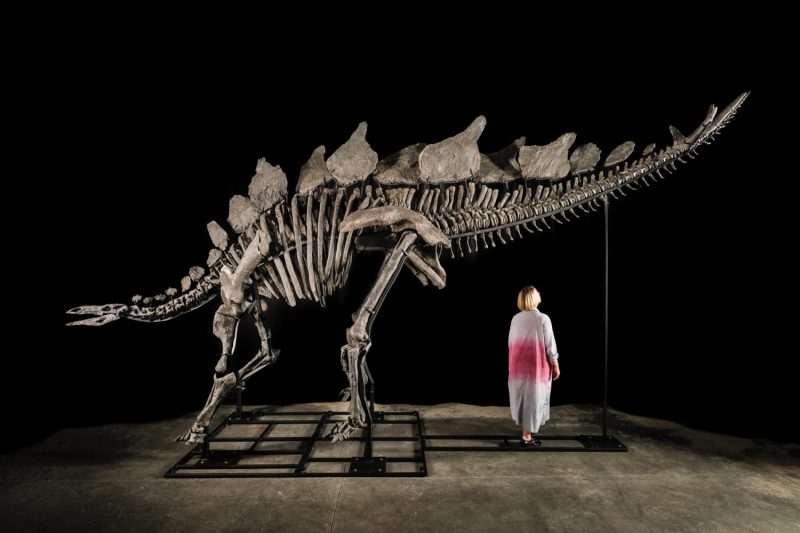
Wall Street Billionaire Ken Griffin Snags Stegosaurus for $45 Million in Historic Auction
Citadels’ Ken Griffin Buys a Stegosaurus for $45 Million in a Record Auction Sale
In a historic auction sale that has caught the attention of both dinosaur enthusiasts and art collectors alike, Ken Griffin, the CEO of Citadel, has added a remarkable piece to his collection – a rare stegosaurus skeleton. The fossil, dating back over 150 million years, was sold for an unprecedented $45 million, shattering previous records for dinosaur acquisitions in the art market. This purchase has not only raised eyebrows but also sparked discussions about the intersection of art, history, and science.
The acquisition of the stegosaurus skeleton represents a significant shift in the perception of fossils as valuable collectibles beyond their scientific worth. While museums and research institutions have traditionally been the primary custodians of such discoveries, private collectors like Ken Griffin have emerged as key players in the fossil market, driving up prices and competing for rare specimens.
The stegosaurus, known for its distinctive spiked tail and bony plates running along its back, is a beloved dinosaur species that has captured the imagination of people of all ages. By acquiring such a well-preserved and complete skeleton, Griffin has not only secured a valuable asset but also brought a piece of prehistoric history into the contemporary art world.
One of the key questions raised by this record-breaking auction sale is the ethical considerations surrounding the ownership and trade of fossils. Critics argue that such high-value transactions can incentivize illegal excavations and trading of fossils, potentially leading to the loss of valuable scientific data and cultural heritage. Balancing the interests of private collectors, museums, scientists, and governments remains a complex challenge in the evolving landscape of fossil ownership.
Moreover, the sale of the stegosaurus skeleton highlights the growing trend of alternative asset investments among high-net-worth individuals. As traditional markets face uncertainties, wealthy collectors are diversifying their portfolios by investing in unique and tangible assets, such as rare art pieces, collectibles, and now, prehistoric fossils. The allure of owning a piece of natural history, coupled with the potential for appreciation in value, makes fossils an attractive proposition for discerning investors.
Ken Griffin’s purchase of the stegosaurus skeleton is not just a reflection of his personal passion for paleontology but also a strategic investment that underscores the evolving dynamics of the art market. As the boundaries between art, science, and commerce continue to blur, the future of fossil acquisitions in the hands of private collectors like Griffin raises intriguing possibilities and challenges for the preservation and accessibility of our planet’s ancient past.
